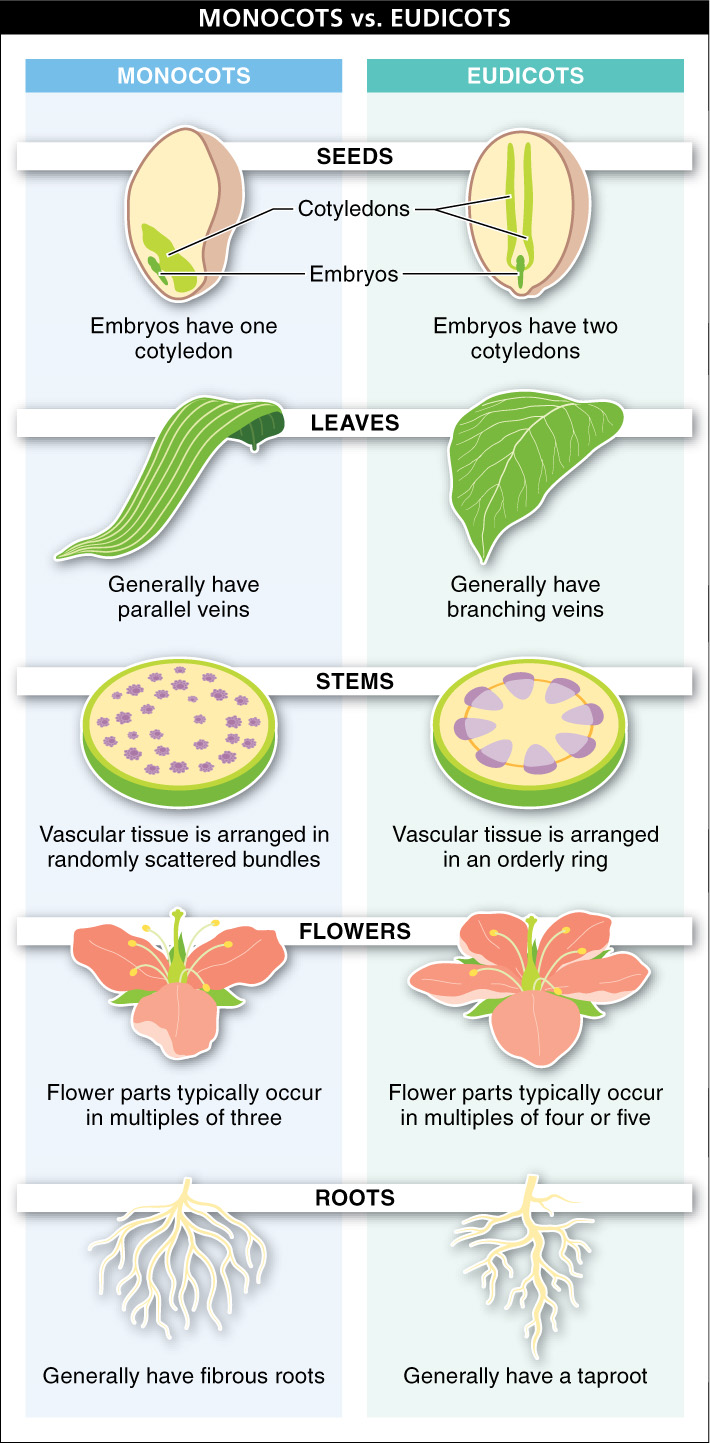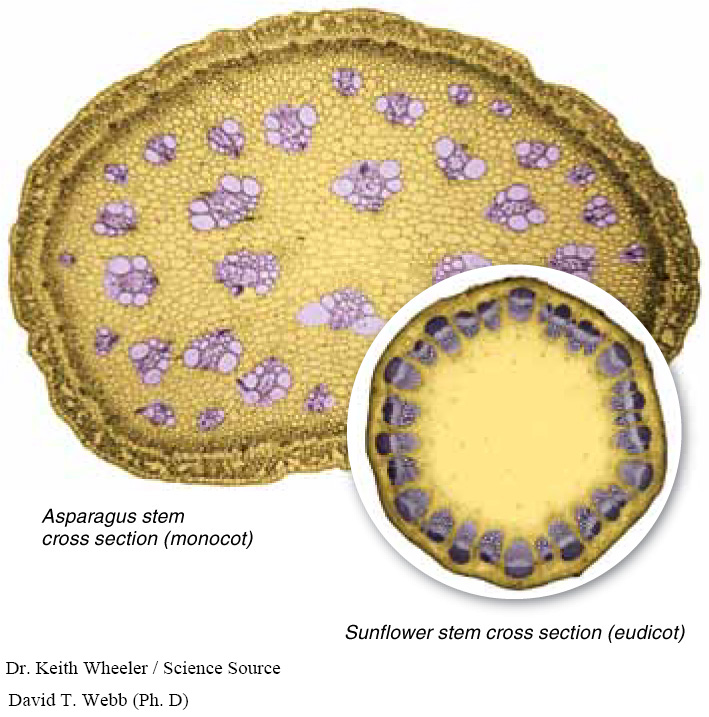
The flowering plants are classified into two major groups, based on some prominent structural features of their seeds, leaves, stems, flowers, and roots. The names of the groups derive from a structure in the plant embryo within the seed, called a cotyledon (pronounced-
Unlike the monocots, the dicots are not a monophyletic group and include many different lineages. (Recall from Chapter 10 that a monophyletic group is one in which all of the individuals are more closely related to each other than they are to any individuals outside that group.) However, a large subset of the dicots, called the eudicots (pronounced you-
In addition to having seeds with only one cotyledon, the monocots (about 70,000 species) differ from the eudicots (just under 200,000 species) with respect to four other common structural features (FIGURE 17-3).

- 1. Leaves. Monocots generally have parallel veins in their leaves, while eudicots have branching veins.
- 2. Stems. Within the stems of monocots, the vascular tissue—
the tissue responsible for nutrient transport— is arranged as numerous, randomly scattered bundles. You can see the scattered vascular bundles if you cut through an asparagus spear (FIGURE 17-4). In eudicots, such as a sunflower, the vascular tissue is arranged in an orderly ring.
- 3. Flowers. The flower parts (such as petals) of monocots typically occur in multiples of three, while in eudicots they occur in fours or fives.
- 4. Roots. Monocots typically have many fibrous roots branching from the stem. Eudicots usually have a taproot, a single primary root with smaller roots branching from it.
Some common monocots are palm trees, orchids, lilies, and all of the grasses, including most of the grains used in food products. Common eudicots include roses, daisies, coffee, potatoes, apples, pears, peaches, strawberries, and most large trees, including maples and oaks.
691
TAKE-HOME MESSAGE 17.2
The flowering plants are divided into two major groups, the monocots and the eudicots, based on structural features of their seeds, leaves, stems, flowers, and roots.
Describe at least two ways in which monocots differ from dicots.
The book describes five structural differences. Monocots form a single cotyledon, whereas dicots form two. Monocots generally have parallel veins in their leaves, whereas dicots have branching veins. In monocots, vascular tissue is arranged in numerous randomly scattered bundles in the stems, whereas the vascular tissue is arranged in an orderly ring in dicots. Flower parts (such as the petals) of monocots typically occur in multiples of three, whereas they occur in multiples of four or five in dicots. Monocots typically have many fibrous roots branching from the stem, whereas dicots usually have a single, primary taproot.